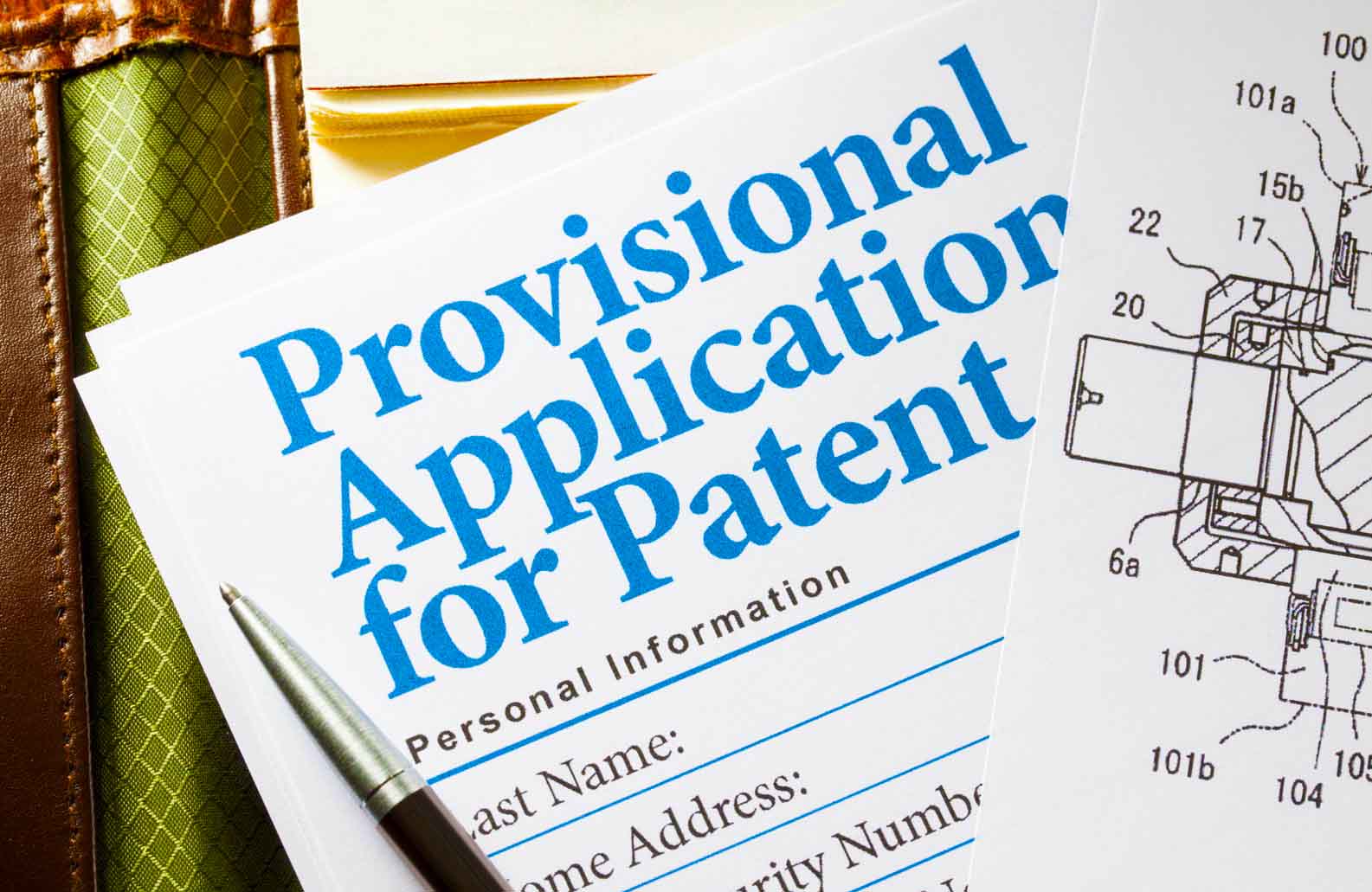Can a Provisional Patent Application be Amended?
Inventors and applicants often file a provisional patent application prior to filing a regular patent application with the USPTO. Applicants often to do this because of the cost of filing and preparing a provisional patent application. However, we get asked all the time whether a provisional patent application can be amended after it’s been filed with the patent office. We will answer this below.
Can a Provisional Patent Application be Amended?
The short answer is: a provisional patent application can be amended but an applicant cannot add new matter beyond what the applicant initially disclosed. Said differently, you have to stick to whatever you included in your provisional patent application. You can only amend your provisional patent application to make it comply with the law, you cannot add anything new to your provisional application.
If an applicant wants to make changes to the information that he provided in the provisional patent application, he can do so by including the changes in the nonprovisional patent application. However, the applicant should be aware that any amendments to the nonprovisional patent application that were not part of the provisional application will not benefit from the early filing date of the provisional patent application.
Said differently, anything new you add to your nonprovisional patent application will not benefit from the earlier filing date of your provisional patent application. This becomes an issue for some applicants if someone files a patent application for the same features before you included them in your nonprovisional patent application.
If they applied to protect the same material that was not included in your provisional application but included in your nonprovisional application, you won’t be able to benefit from the early priority date of your provisional application.
Some Applicants who want to make amendments to their provisional patent application do so by simply filing a subsequent provisional patent application that includes the changes that they want to make. But, the drawback of doing this is that the two applications will have different priority dates, each having a priority date of the day it was filed. Doing this could cause a problem if someone files a patent application for the same matter in between your filing of the first provisional application and the second provisional application.
How to Avoid Making Amendments to Your Provisional Patent Application?
Inventors who have an invention but have not yet filed a provisional patent application often avoid having to make amendments to their provisional patent application by drafting the description of their invention as broadly as possible. Applicants typically take a step back and as themselves whether the description they included describes the invention as it would be used in its final form.
We know that sometimes it’s difficult to anticipate what the final version of your invention will look like, so if you have time, hold off on filing a provisional patent until you have a better idea of how your invention works and how people will use it.
Applicants often draft their provisional patents just like a person would write an instruction manual for their invention. Although provisional patents aren’t examined by the patent office, you need them to support a later-filed nonprovisional application.
To do this, the patent examiner will need to compare the invention you described in your nonprovisional application to the invention in your provisional application, if they’re too different, you won’t be able to benefit from your earlier priority date.
So, do as good a job as possible to broadly describe your invention in your provisional patent application to avoid all of the problems associated with amending a provisional patent.
Drawings
Many applicants mistakenly believe that because they are filing a provisional patent, they don’t need to include drawings with their provisional application. That is a mistake. You’ve probably heard the saying that a picture is worth a thousand words. This couldn’t be truer when it comes to patent applications.
Drawings are great to supplement the description of your invention. They often fill in the gaps that are left by the written description. So, as a rule of thumb, include drawings whenever possible, their value may surprise you if your written description fails you.
If you don’t know how to create drawings for your invention, you can seek the help of a professional. There are many professional artists who specialize in creating drawings that meet the requirements of the patent office. We have seen such services cost between $50 to $100 per drawing and you’ll need several of them. So, keep the cost in mind when budgeting to patent your invention. Drawings may seem expensive up front, but they are a very good and cheap way to expand the scope of your provisional patent application. Including them can save you time and money down the road.
Why is the Importance of Provisional Patent Application Often Overlooked?
Applicants often look at the ease of preparing a basic provisional patent application and think that they don’t need to spend the time and money to carefully prepare them. However, the truth is that applicants should spend the time to carefully prepare them because the provisional application could prove to be very important, especially if another party files a patent application for the same matter after the applicant files a provisional patent application.
As you may know, provisional patent applications do not ever turn into a patent grant unless an applicant files a nonprovisional (regular) patent application. So, if an applicant prepares a poor provisional patent application that does not appropriately describe an invention that he wants to patent, the patent office may determine that the invention in a later-filed nonprovisional application is not similar to the one the applicant disclosed in the provisional application.
This type of finding will prohibit the applicant from claiming the benefit of an earlier-filed provisional application. This becomes an issue if a different party files a patent application after the applicant files his provisional patent and before the applicant files his nonprovisional patent. So, as a word of caution: pay attention to and carefully prepare your provisional patent.
Attorney
If you don’t have the necessary experience preparing a provisional patent, you will benefit greatly from having an experienced patent attorney assist you with its preparation. Patent attorneys are familiar with the process, they know what needs to be done to obtain their client the best possible patent protection for their invention. Don’t underestimate the value that an experienced attorney brings to the table, even if you’re hiring them to prepare something like a provisional application.
If you don’t have the budget to hire an attorney to prepare your provisional patent application, you should consider the option of hiring a patent agent. Like patent attorneys, patent agents are licensed by the USPTO to assist applicants in preparing patent applications, as well as dealing with the patent office on their behalf. The best part is that they typically charge less than patent attorneys because they don’t have a legal education. That said, they are competent to assist inventors in matters in patent matters.
Converting Your Provisional Patent Application
An applicant has two options to “convert” his provisional patent application into a (regular) nonprovisional utility patent application. The first way to accomplish this is to file a nonprovisional patent application that claims the benefit of the earlier-filed patent application.
The second, less popular way, is to file a petition to convert a provisional patent into a nonprovisional patent application. Inventors mostly choose to file a regular utility patent application that claims the benefit of an earlier-filed provisional patent because they get an extra year of protection.
This is so because by the patent term begins on the day that you file your nonprovisional patent application. Whereas if an applicant were to choose to convert his provisional patent, the patent term would begin on the day of filing the provisional patent. So, ask an attorney what option you should choose and follow their instructions.
Amending a Provisional Patent Application
By now, you should know that substantive changes to a provisional patent application are not allowed by the patent office. Changes to make the application comply with the law are permitted, but absent extraordinary circumstances, amendments are not permissible.
To avoid the hassle of having to make an amendment to your application, later on, spend the time and money to properly prepare your provisional patent application because it may pay off in the long run if your provisional application proves to be important. If you have any general questions or comments, please feel free to leave them in the comments section below.







